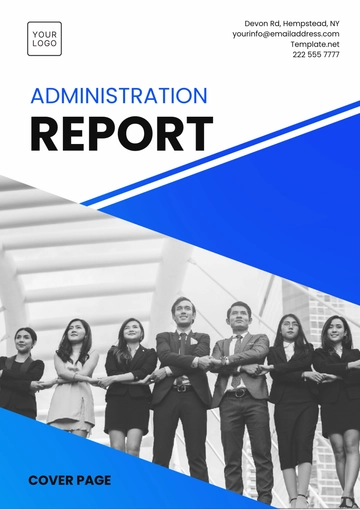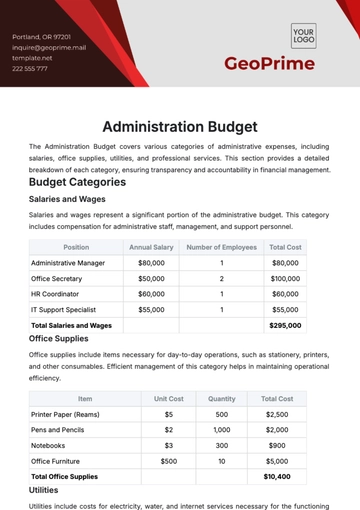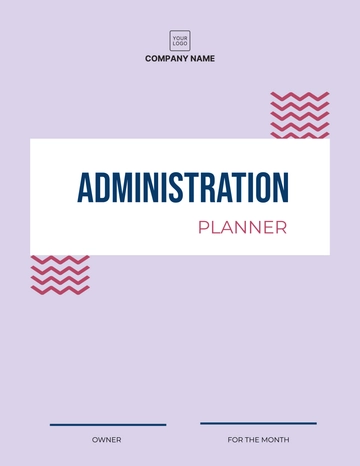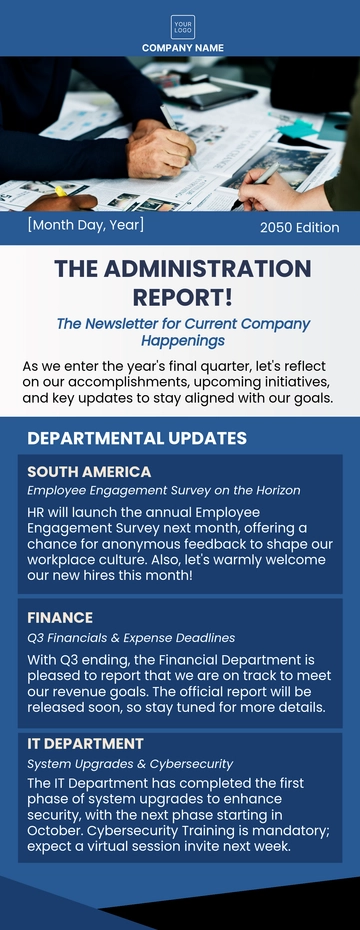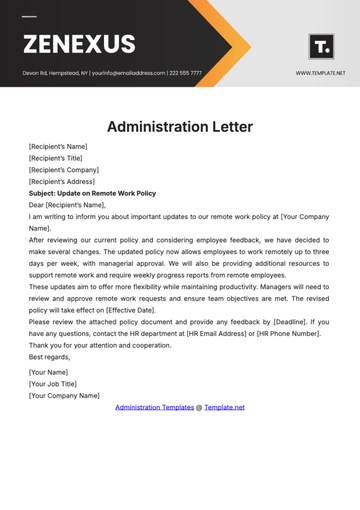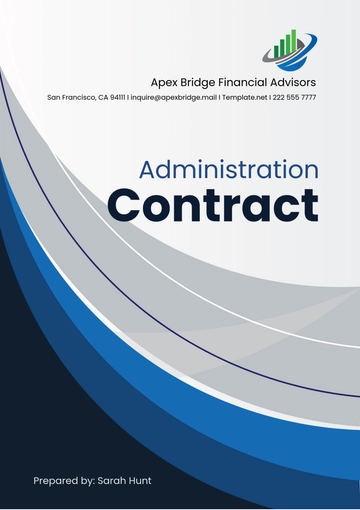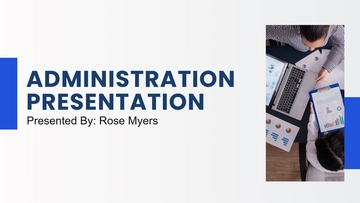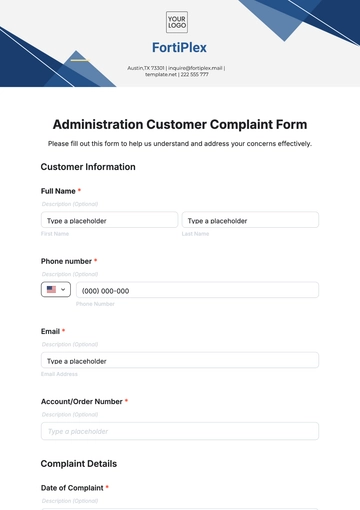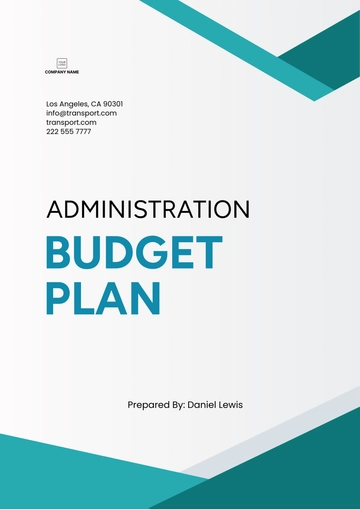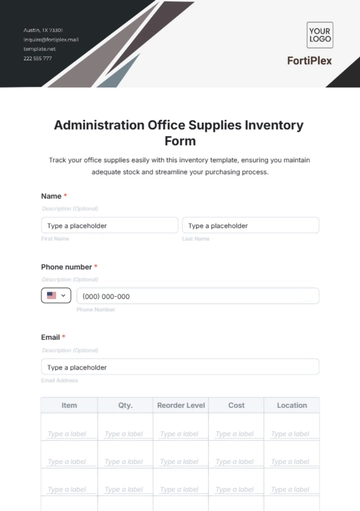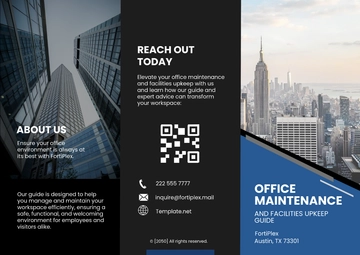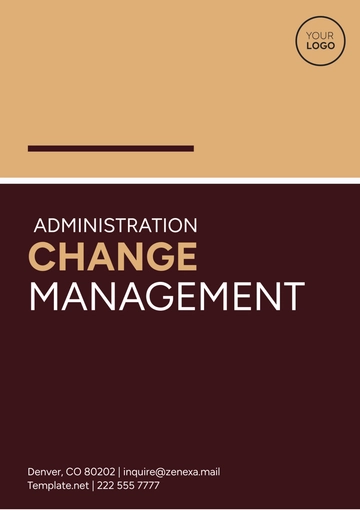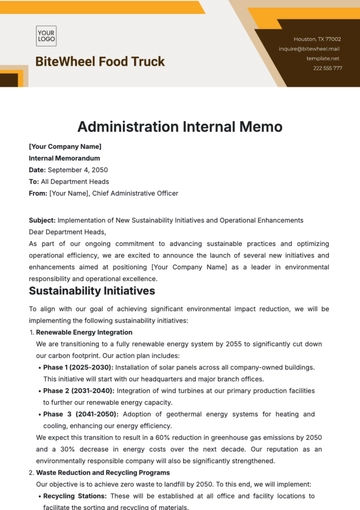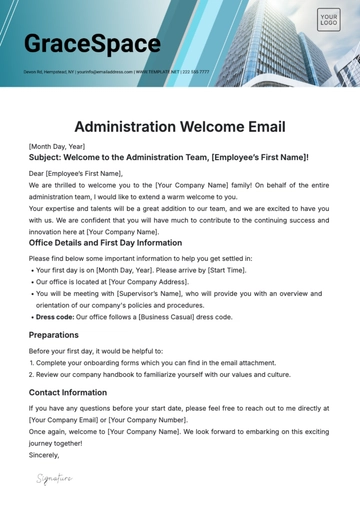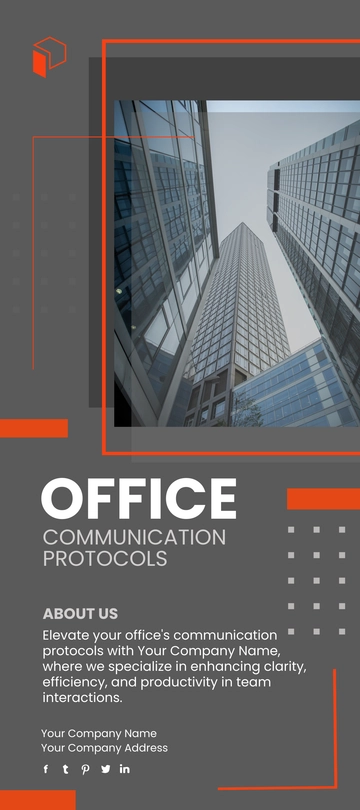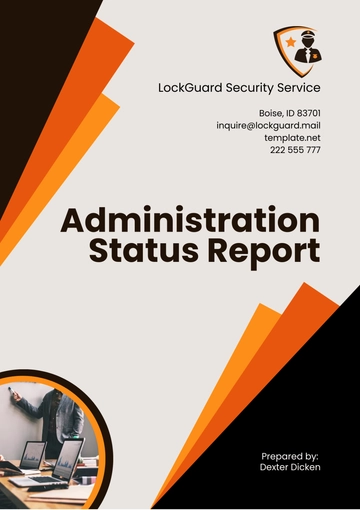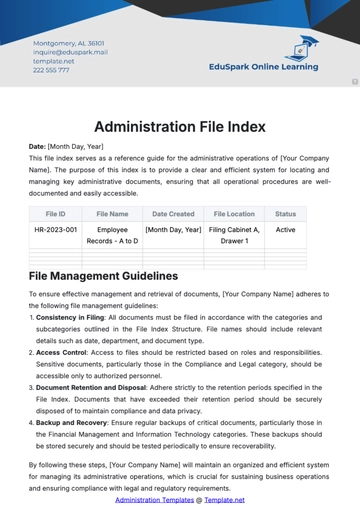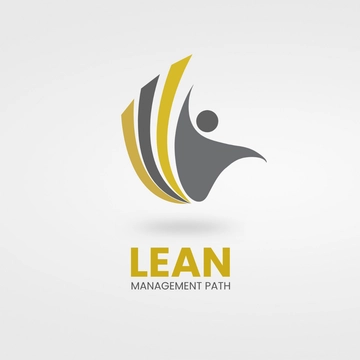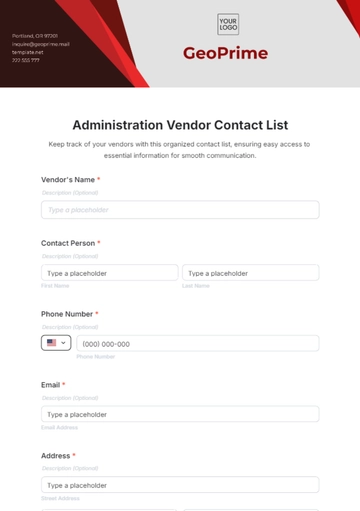Free Administration External Communication Protocol

I. Introduction
In today's interconnected world, effective external communication is paramount for businesses to maintain positive relationships with customers, stakeholders, and the public. The Administration External Communication Protocol outlines the guidelines and procedures for [Your Company Name] to ensure professionalism, consistency, and transparency in all external communications.
II. Policy Statement
We, at [Your Company Name], deeply understand and appreciate the substantial role that external communication plays in not only shaping the public's perception of our organization but also in fostering and consistently maintaining a sense of trust and goodwill. It is our unwavering commitment to cultivate a culture of open, genuine, and prompt communication with all of our external stakeholders. In doing so, we place tremendous emphasis on upholding the utmost levels of professionalism and integrity at all times. We sincerely believe that by steadfastly adhering to the principles and guidelines outlined in this External Communication Protocol, we can successfully facilitate the optimal flow of information. This, in turn, allows us to cultivate and maintain fruitful and enduring relationships with a multitude of significant parties, including our esteemed customers, valued partners, and the broader community in which we operate.
III. Roles and Responsibilities
The following roles are designated for managing external communication:
Role | Responsibilities |
|---|---|
Spokesperson | Responsible for representing the company in media interviews, press conferences, and public statements. |
Public Relations Team | Oversees the development and dissemination of press releases, media pitches, and other external communication materials. |
Customer Service Representatives | Interact directly with customers via phone, email, and social media platforms, addressing inquiries, concerns, and feedback. |
Marketing Team | Manages the company's external marketing communications, including advertising campaigns, social media content, and email newsletters. |
Executive Leadership | Provides guidance and strategic direction for external communication initiatives, ensuring alignment with company values and objectives. |
Each role is responsible for adhering to the guidelines outlined in this protocol and maintaining consistency in messaging and tone across all external communication channels.
IV. Communication Channels
[Your Company Name] utilizes a variety of communication channels to engage with external stakeholders:
Method | Details |
|---|---|
Primary channel for one-on-one communication with customers, partners, and other external contacts. | |
Social Media | Platforms such as Facebook, Twitter, LinkedIn, and Instagram are used to share company updates, engage with followers, and respond to inquiries. |
Press Releases | Official statements issued to media outlets to announce company news, product launches, or other significant developments. |
Website | Company website serves as a central hub for information, providing details about products, services, and corporate initiatives. |
Public Events | Participation in industry conferences, trade shows, and community events to network and build relationships with external stakeholders. |
Each communication channel serves a specific purpose and is utilized strategically to reach the intended audience effectively.
V. Communication Standards
Maintaining consistent communication standards is essential for portraying a professional image and ensuring clarity in messaging. At [Your Company Name], we adhere to the following communication standards:
Clear, concise, and jargon-free messaging is paramount to ensure easy understanding by all audiences. Each external communication should reflect the professionalism and values of our company, maintaining a respectful tone and demeanor. Accuracy is fundamental; therefore, information shared externally must be factually correct to avoid misleading stakeholders. Timeliness is crucial in demonstrating responsiveness and commitment to customer satisfaction.
Thus, responses to inquiries, requests, and complaints are provided promptly. Consistency in messaging across all communication channels is vital to avoid confusion and maintain brand integrity. By adhering to these communication standards, we ensure that external communications effectively convey the company's messaging and values.
VI. Crisis Communication Plan
In the event of a crisis or emergency situation, [Your Company Name] has developed a comprehensive Crisis Communication Plan to manage external communication effectively. This plan includes the designation of a spokesperson who will serve as the primary point of contact for media inquiries and public statements during a crisis. Internal communication channels will be activated to disseminate information to employees and stakeholders promptly. Transparency and openness will be prioritized in communicating with the public, providing regular updates and addressing concerns proactively. Standardized protocols will be followed for responding to media inquiries and requests for interviews, ensuring consistency and accuracy in messaging.
The Crisis Communication Plan will be regularly reviewed and updated to incorporate lessons learned from previous incidents, ensuring continuous improvement in crisis management practices. By following this plan, [Your Company Name] aims to mitigate the impact of crises on its reputation and maintain trust with external stakeholders.
VII. Confidentiality and Privacy
[Your Company Name] is committed to protecting the confidentiality and privacy of sensitive information shared externally. The following measures are implemented to safeguard confidential information:
Encryption: Sensitive data shared via email or other digital communication channels is encrypted to prevent unauthorized access.
Access Controls: Role-based access controls are implemented to restrict access to confidential documents and information, ensuring that only authorized personnel can view or modify sensitive data.
Non-Disclosure Agreements: External partners and contractors may be required to sign non-disclosure agreements to protect confidential information shared during collaborative projects.
Data Security Measures: Robust data security measures, such as firewalls, antivirus software, and intrusion detection systems, are in place to prevent data breaches and unauthorized access to confidential information.
Employee Training: Regular training sessions are conducted to educate employees on the importance of confidentiality and privacy, emphasizing the proper handling and protection of sensitive information.
By prioritizing confidentiality and privacy in external communication, [Your Company Name] maintains the trust and confidence of its customers, partners, and stakeholders.
VIII. Compliance and Legal Considerations
[Your Company Name] is committed to complying with all relevant laws, regulations, and industry standards governing external communication, including but not limited to:
Laws | Details |
|---|---|
General Data Protection Regulation (GDPR) | Ensuring compliance with GDPR requirements for the collection, processing, and storage of personal data of individuals in the European Union. |
CAN-SPAM Act | Adhering to CAN-SPAM Act regulations for commercial email communications, including providing clear opt-out mechanisms and accurate sender information. |
Fair Use and Copyright Laws | Respecting fair use and copyright laws when sharing third-party content or materials externally, obtaining necessary permissions or licenses as required. |
Defamation and Libel Laws | Avoiding statements or claims that could be construed as defamatory or libelous, ensuring that all external communications are truthful and factual. |
Industry-Specific Regulations | Adhering to any industry-specific regulations or guidelines relevant to [Your Company Name]'s operations, such as healthcare privacy regulations or financial disclosure requirements. |
By ensuring compliance with legal and regulatory requirements, [Your Company Name] mitigates the risk of legal liabilities and upholds its reputation as a responsible corporate citizen.
IX. Training and Education
To equip employees with the knowledge and skills necessary for effective external communication, [Your Company Name] provides the following training and education initiatives:
Communication Skills Workshops: Training sessions focused on developing effective communication skills, including writing, public speaking, and active listening.
Privacy and Data Protection Training: Education programs to raise awareness of privacy laws and regulations, emphasizing the importance of safeguarding confidential information in external communication.
Crisis Communication Drills: Simulation exercises to practice crisis communication scenarios and familiarize employees with the Crisis Communication Plan.
Media Training: Workshops conducted by media relations professionals to train designated spokespersons on handling media interviews, press conferences, and public statements effectively.
Continuous Learning Opportunities: Access to online resources, webinars, and professional development courses to support ongoing learning and skill development in external communication.
By investing in training and education, [Your Company Name] empowers employees to represent the company professionally and effectively in external communication.
X. Monitoring and Evaluation
To assess the effectiveness of external communication efforts and identify areas for improvement, [Your Company Name] implements the following monitoring and evaluation measures:
Performance Metrics: Tracking key performance indicators (KPIs) such as response time to customer inquiries, social media engagement metrics, and media coverage to measure the impact of external communication activities.
Customer Feedback: Soliciting feedback from customers and stakeholders through surveys, focus groups, and online reviews to gauge satisfaction with external communication practices.
Media Monitoring: Monitoring media coverage and online mentions of the company to identify any emerging issues or trends that may require a response.
Internal Feedback Mechanisms: Encouraging employees to provide feedback on external communication processes and practices, facilitating continuous improvement and innovation.
Regular Reviews: Conducting regular reviews and audits of external communication strategies, protocols, and materials to ensure alignment with company goals and objectives.
By continuously monitoring and evaluating external communication efforts, [Your Company Name] can adapt and refine its approach to meet the evolving needs and expectations of stakeholders.
XI. Review and Revision
The External Communication Protocol will be reviewed and revised regularly to incorporate feedback, address emerging challenges, and ensure alignment with industry best practices. The following process will be followed for review and revision:
Process | Details |
|---|---|
Scheduled Reviews | The External Communication Protocol will be reviewed at least annually by the designated communication team to assess its effectiveness and relevance. |
Feedback Collection | Input and feedback will be solicited from employees, stakeholders, and external partners to identify areas for improvement or updates. |
Revision Process | Based on the feedback received and changes in regulatory requirements or industry standards, revisions will be made to the External Communication Protocol as necessary. |
Approval and Implementation | Revised versions of the External Communication Protocol will be reviewed and approved by executive leadership before being disseminated to employees for implementation. |
Training and Communication | Employees will be informed of any updates or changes to the External Communication Protocol through training sessions, internal communications, and documentation updates. |
By maintaining a proactive approach to review and revision, [Your Company Name] ensures that the External Communication Protocol remains relevant, effective, and aligned with the company's goals and objectives.
XII. Conclusion
The Administration External Communication Protocol serves as a guiding framework for [Your Company Name] to engage effectively with external stakeholders, uphold professionalism and integrity, and build trust and credibility in all communication endeavors. By adhering to the principles outlined in this protocol and embracing a culture of continuous improvement, [Your Company Name] strives to maintain positive relationships with its customers, partners, and the community at large.
- 100% Customizable, free editor
- Access 1 Million+ Templates, photo’s & graphics
- Download or share as a template
- Click and replace photos, graphics, text, backgrounds
- Resize, crop, AI write & more
- Access advanced editor
Introducing Template.net's Administration External Communication Protocol Template, your ultimate solution for professional communication. This customizable and editable template ensures precision and effectiveness in external interactions. Leveraging our Ai Editor Tool, tailor your communication effortlessly to meet specific needs. Enhance your administrative efficiency today with our expertly designed template. Perfect for all industries, it's your key to streamlined communication.
